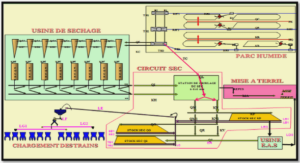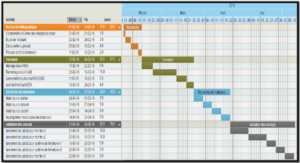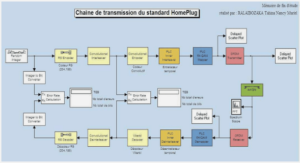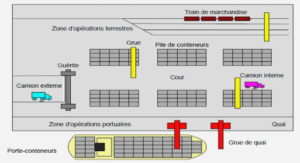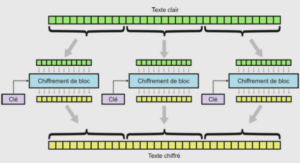The photoemission spectroscopy originates from the discovery of the photoelectric effect by Hertz [21], which was later explained by Einstein [22], who obtained the Nobel prize in 1921. After its discovery photoemission spectroscopy has become more and more used to understand the electronic properties of materials [4]. In a general spectroscopy experiment, one perturbs an electronic system by transferring some external energy (perturbation), and measures the response of the system after excitation. This allows one to access a great deal of information about the electronic properties of the system. Photoemission spectroscopy can be divided into two complementary processes, namely direct and inverse photoemission spectroscopy ((I)PES). In the direct photoemission the sample absorbs photons and the electrons in the sample are excited and emitted. Knowing the photon energy and by measuring the kinetic energy of the photoelectrons, one can infer information about the energy distribution of electronic states (the occupied states in an independent-particle picture) of the sample. The inverse photoemission (IPES) can be considered as the time-reversal of PES, where the electrons are absorbed and photons are emitted and measured in the detector. Consequently one can access the information of the possible empty (unoccupied) states (in an independent-particle picture) of the sample.
In an independent-particle picture , the energy difference between the incoming photons and outgoing photoelectrons in (AR)PES gives directly the energy of the one-particle level that the one electron was occupying before being emitted from the system.
However, the spectrum one actually obtains from an (AR)PES experiment is most of the time different from the simple independent-particle picture. In fact, the emitted electron leaves a hole in the electronic system corresponding to a positive charge. The remaining electrons in the system can react to that hole, which screens the hole. Alternatively speaking, the hole left behind attracts the surrounding electrons due to the attractive interaction between positive and negative charges. The screened particles are called quasi-particles (QPs). The interaction between QPs is weaker than the interaction between bare electrons: instead of the bare Coulomb interaction, the effective interaction in the system is the dynamically screened Coulomb interaction W . Since the dynamical screening corresponds to excitations into which the QP can decay, the latter corresponds to an excited state of the system with a finite lifetime. As a consequence, in an ARPES experiment we observe a broadened peak with finite width, which gives a measure of the interactions due to the presence of a hole.
Moreover, besides the broadening the observed QP weight is reduced compared to the independent-particle picture. This is because the hole induced by the photoemission exites all remaining electrons, which often leads to collective wave like oscillations in the system. This collective oscillation is a neutral excitation as opposed to the charged excitation, because after the photoemission, the remaining electrons move inside the system and the total number of electrons is conserved. The neutral excitations are of bosonic nature because they are constituted by pairs of fermions (e.g., excitons and plasmons) . Therefore besides the QPs, the photon energy has been used also to excite the additional excitations (e.g., the plasmon excitation will be discussed intensively throughout this thesis) yielding new structures in the spectrum. The renormalized QP weight is reduced by giving some weight to these additional structures, leading to a fractional renormalization factor Z < 1. In simple systems like simple metals or semiconductors, the weight of the plasmon excitations are smaller than the QP weight. The peaks due to the plasmon excitations are called satellites in the photoemission spectrum. As a collective oscillation, the plasmon excitation should be able to propagate as all other waves in nature (e.g., waves of water), the longer it propagates, the smaller its weight (possibility of excitation) indicating that we should be able to observe not only one plasmon satellite but its replica with decreasing weights .
|
Table des matières
1 Introduction
1.1 Photoemission spectroscopy
1.1.1 What happens during photoemission spectroscopy?
1.1.2 Theoretical approach to photoemission spectroscopy
1.2 Green’s function theory
1.2.1 Definition of the one-body Green’s function
1.2.2 The Lehmann representation and the intrinsic spectral function
1.3 Summary
2 State-of-the-art theories in electron spectroscopy
2.1 Density functional theory
2.1.1 The many-body problem
2.1.2 Kohn-Sham DFT
2.2 Hedin’s equations and the GW approximation
2.2.1 The GW approximation in theory
2.2.2 The GW approximation in practice
2.3 The cumulant expansion approximation
2.3.1 The TOC96
2.3.2 The retarded cumulant
2.4 Summary
3 Unified derivations of the GWA and CEA
3.1 Linearization
3.2 The GW approximation from the linearized differential equation
3.3 The TOC11 from the linearized differential equation
3.3.1 Cumulant from Decoupling approximation
3.3.2 The GW quasi-particle correction
3.4 The retarded cumulant
3.4.1 Ansatz that gives the GWA
3.4.2 Ansatz that gives a retarded cumulant
3.5 Summary
4 Conclusion
![]() Télécharger le rapport complet
Télécharger le rapport complet

